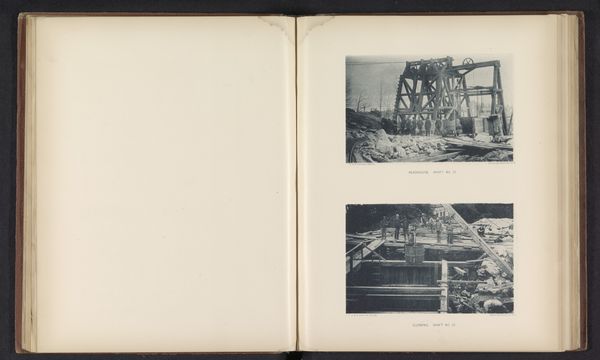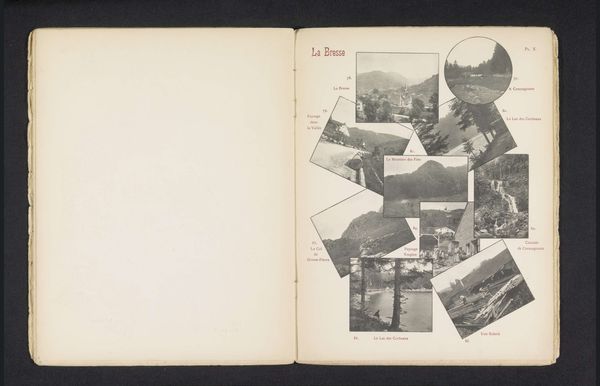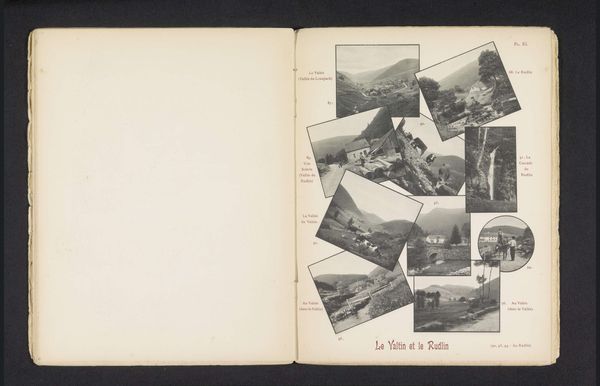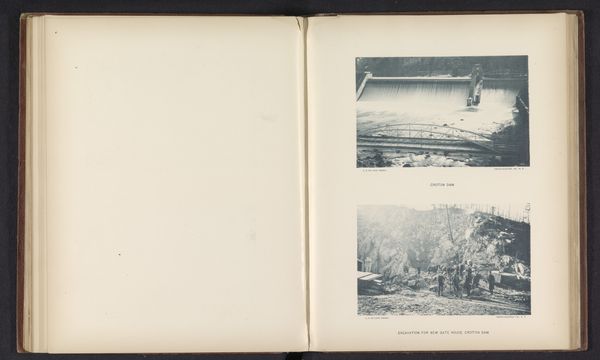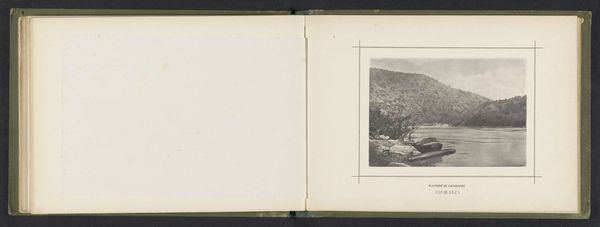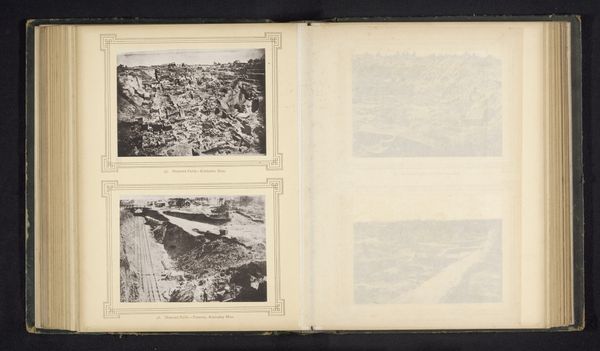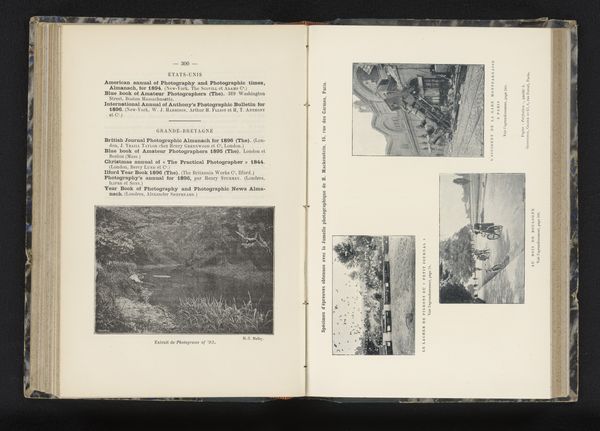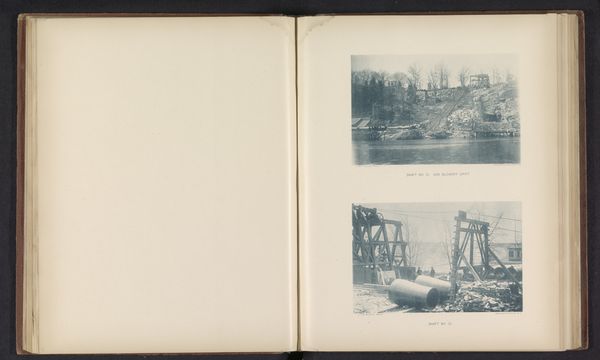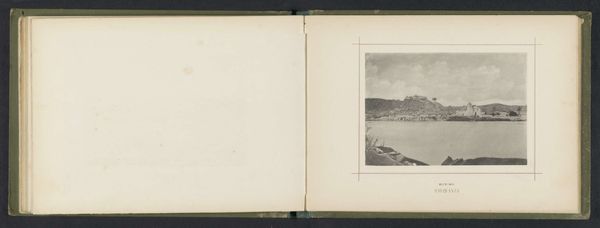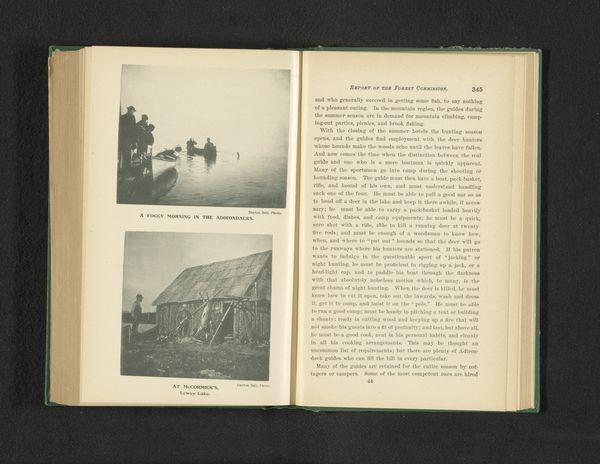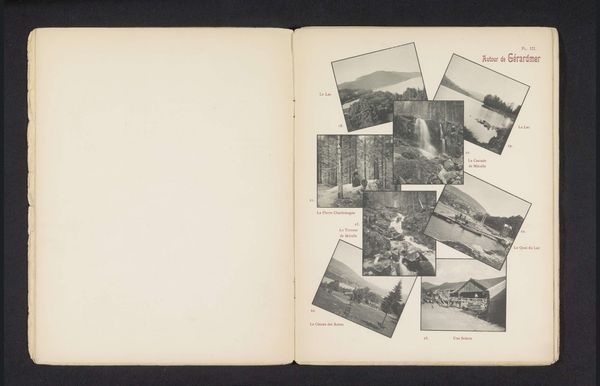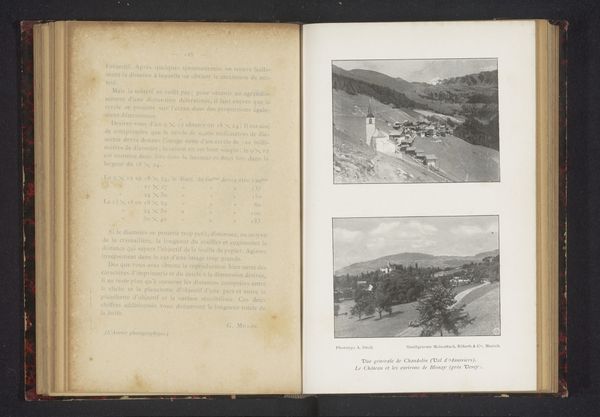
Boulevard langs Capstone Hill, een gezicht op High Street en een pad op de Cairn te Ilfracombe c. 1900 - 1920
0:00
0:00
print, photography, albumen-print
#
pictorialism
# print
#
landscape
#
photography
#
cityscape
#
albumen-print
Dimensions: height 84 mm, width 133 mm
Copyright: Rijks Museum: Open Domain
Editor: Here we have “Boulevard langs Capstone Hill, een gezicht op High Street en een pad op de Cairn te Ilfracombe” by the Twiss Brothers, dating from around 1900 to 1920. It’s an albumen print, a type of photograph, depicting scenes from a town. I am struck by the composition. It has the feel of a postcard collage from a holiday trip. How do you read this piece? Curator: I see this album print as a social document of its time, reflecting the popularization of tourism and the changing experience of place at the turn of the century. The collage-like presentation is significant; the work speaks to the very idea of constructing identity through a selective arrangement of place. Editor: So, it's about how we create memories and construct narratives through images of places we've visited? Curator: Exactly. The very act of assembling these images becomes a statement about the burgeoning tourist industry, about what places were considered worthy of documentation, and about who had access to these experiences. Consider that the Twiss Brothers, through their commercial studio, were mediating and selling access to idealized versions of the local landscape. Their choices of scenes may appear "neutral" but are instead loaded with the ideologies of class, accessibility, and the aesthetic preferences of their clientele. Note how specific locales and viewpoints are selected to convey an impression, rather than presenting the social realities for inhabitants of Ilfracombe. Do you see the ways these pictorial landscapes might contrast with images created by or representing working class individuals at the same time? Editor: Yes, now that you mention it, this feels very curated. What looked initially like an innocent snapshot album page actually points towards complex social and economic structures. It invites us to question whose stories are being told. Curator: Precisely. And how those stories shape our collective memory of place and time. Editor: I never considered photographs like this to be more than scenic views, but I see your point about examining art as a reflection of its social context. Thanks!
Comments
No comments
Be the first to comment and join the conversation on the ultimate creative platform.
